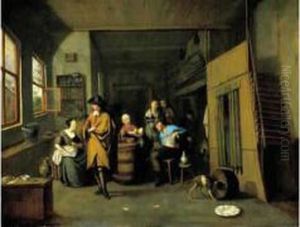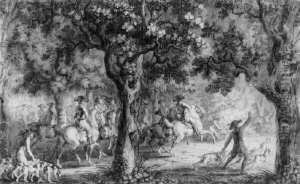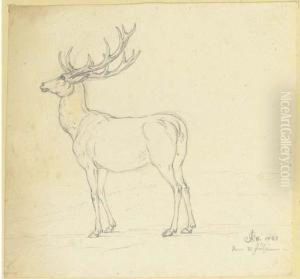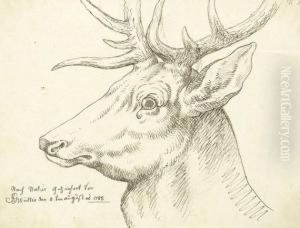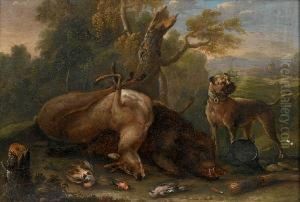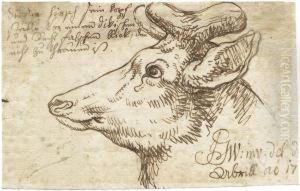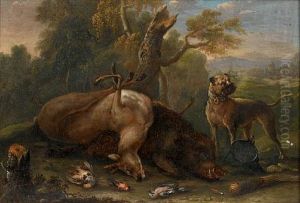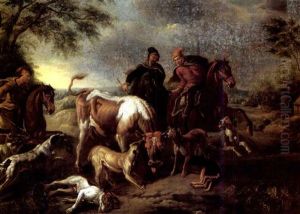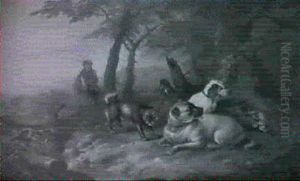Joseph Georg Winter Paintings
Joseph Georg Winter was a German painter born in 1742, whose work is often associated with the Rococo and early Neoclassical movements. Winter's artistic journey began in his hometown, where he was initially exposed to painting and drawing. His early interest in the arts led him to seek formal training, which was a common path for artists of his era to refine their skills and gain recognition.
Winter's body of work primarily consisted of religious and mythological scenes, portraits, and landscapes. His paintings are characterized by their meticulous attention to detail, vibrant color palette, and dynamic compositions. These elements combined to create visually appealing works that were well-received by his contemporaries. Winter had a particular talent for capturing the essence of his subjects, which made his religious and mythological paintings especially compelling. He was able to convey the narratives and emotions of these stories through his skillful use of light, shadow, and gesture.
Throughout his career, Winter traveled to various parts of Germany and beyond, absorbing influences from other artists and artistic movements. This exposure allowed him to continuously develop his style, integrating new techniques and ideas into his work. Despite not being widely known outside of Germany, within his homeland, Winter was appreciated and received commissions from both religious institutions and private patrons.
Joseph Georg Winter's contribution to the art world of his time was significant, even if his name is not as recognized today as some of his contemporaries. He played a role in the transition from the Rococo's ornamental aesthetics to the more restrained and classical approach of Neoclassicism. Winter's paintings remain a testament to his artistic skill and the diverse influences that shaped his work.
He passed away in 1807, leaving behind a legacy that, while not extensive, is valued for its artistic quality and historical significance. Today, Winter's works can be found in various museums and collections, where they continue to be studied and appreciated for their contribution to the German art of the late 18th and early 19th centuries.
